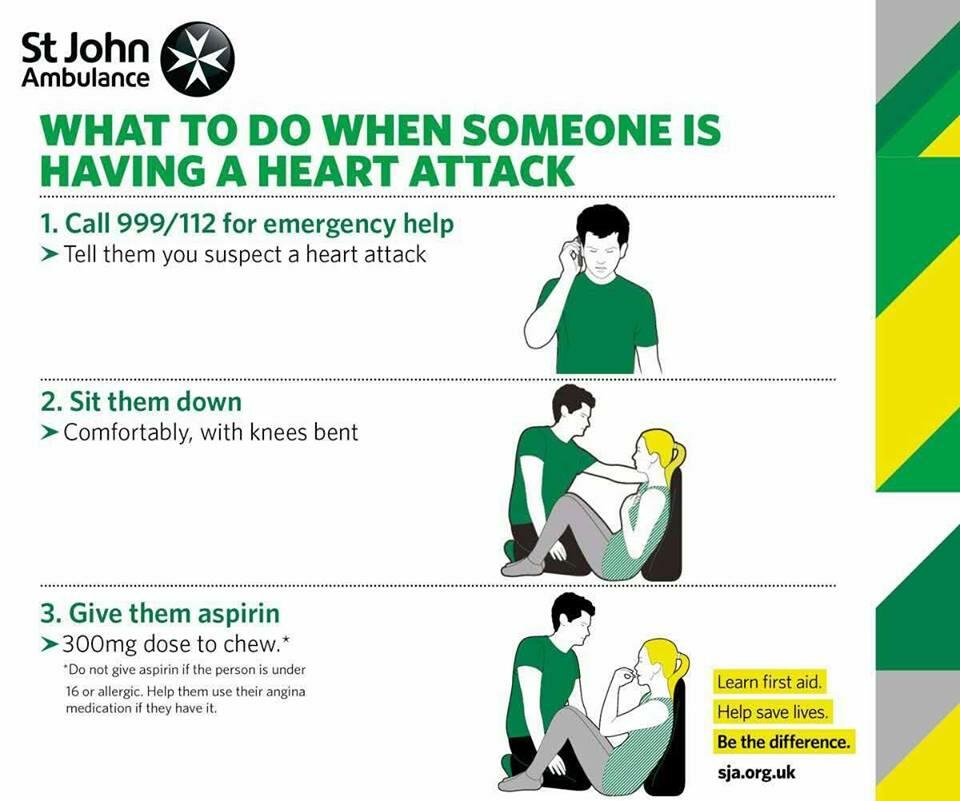Introduction
Maintaining cardiovascular health remains an extremely significant task of every individual since the proper work of the human heart supports the functioning of other organs. Heart attacks can be listed among the most dangerous health issues due to their ability to stop the work of the heart muscle.
The importance of the issue relates to the fact that many people are unable to recognize a heart attack because its symptoms can be diverse and atypical. The patient handout is designed for adult men and women who want to learn more about a heart attack, ways to recognize it, and risk factors.
What is a Heart Attack?
Myocardial infarction is the scientific term used to denote a heart attack. It is known as one of the most dangerous forms of coronary heart disease. A heart attack occurs due to the disturbance of blood supply to certain parts of the heart. As a result, the heart muscle becomes unable to fulfill its functions, and it causes permanent changes in the work of the human heart that vary in harmfulness (Roland, n.d.).
Nowadays, cardiologists single out three types of heart attacks (Roland, n.d.):
- STEMI (ST-Elevation Myocardial Infarction) is characterized by the complete blockage of the coronary artery; the ST segment is a part of the ECG curve that represents the period of the cardiac cycle when both cardiac ventricles are active;
- NSTEMI (Non-ST-Elevation Myocardial Infarction) is a heart attack during which the coronary artery is not fully blocked; therefore, it causes less damage than the previous type;
- Unstable angina pectoris is the so-called “silent” heart attack, involves no CA blockage.
Risk Factors
Although the demographic characteristics of people who experience heart attacks are extremely diverse, specific factors should be taken into account to define measures helping to improve and maintain cardiovascular health. Risk factors are heterogeneous in nature, and some of them cannot be eliminated or reduced since they present things that people cannot control. In general, there are two groups of risk factors increasing the probability of heart attacks.
To begin with, there are factors that cannot be changed. Despite the inability to control them, people who belong to the groups listed below can contribute to their cardiovascular health by seeing a cardiologist on a regular basis.
Unchangeable risk factors (American Heart Association, 2016):
- Advanced age – risks of having heart attacks are increased for people older than 60;
- Being a male – heart attacks are more common in men;
- Family history of heart disease;
- Ethnicity – people who do not belong to the Caucasian race, are at increased risk of heart attacks;
Assessing your risks of having a heart attack in the future, it is pivotal to pay attention to risks that exist due to a lack of self-care and being irresponsible when it comes to health. The risk factors that can be modified include the following (American Heart Association, 2016):
- Diabetes – risks of cardiovascular disease increase when the level of blood sugar is not properly controlled;
- Obesity – being overweight or obese can be detrimental to cardiovascular health, affecting blood pressure and physical activity;
- Sedentary lifestyle – when there is a lack of exercise, even moderate cardiovascular load becomes quite dangerous;
- Unhealthy habits – smoking, alcohol abuse, and eating too much food with saturated fat are detrimental to cardiovascular health.
How to Recognize a Heart Attack: Warning Signs and Sex Differences

Every person should be aware of warning signs indicating a myocardial infarction. Increasing patient education is pivotal since the timeliness of emergency care is the key to decreasing mortality rates (McGonigle & Mastrian, 2018). Apart from self-help measures, every person should know how to provide first aid to other people (see Figure 1).
A heart attack is often preceded by early symptoms that should never be ignored. Do not hesitate to request medical assistance if you have one or more of the following symptoms:
- Periodical chest pain;
- Chest pain radiating to jaw or neck;
- Increased body perspiration;
- Queasiness;
- Dizziness;
- Respiratory embarrassment (Story, n.d.).
Importantly, recent studies in the field of cardiology indicate that the signs of heart attack depend upon patients’ sex. As it has been stated, men usually face greater risks of having heart attacks. Specific symptoms that are more typical for heart attacks in men include chest pain with varying degrees of intensity and pain in the upper half of the body.
When it comes to pain in men, areas that can be involved include the back, stomach, arms, and shoulders (Story, n.d.). Also, heartbeat changes act as an important sign of heart attacks in men. Unlike women, men having heart attacks often indicate sensations that are similar to the symptoms of digestive troubles such as stomach discomfort.
The symptoms of heart attacks that are present in both women and men include difficult breathing, dizziness, and the presence of cold sweat. Therefore, many signs can be used to identify this condition regardless of the patient’s sex. Nevertheless, there is a range of warning signs that are more common in women. To begin with, they include excessive tiredness; it can take place after strenuous activity or for no reason. Other symptoms commonly reported by women include difficulty sleeping, throat or jaw pain, and anxious feelings (Story, n.d.).
Helpful Online Resources
To get more information on the health issue and related research, visit the following websites:
- Thrombosis Adviser;
- American Heart Association;
- Healthline;
- The Heart Foundation.
References
American Heart Association. (2016). Understand your risks to prevent a heart attack. Web.
McGonigle, D., & Mastrian, K. G. (2018). Nursing informatics and the foundation of knowledge (4th ed.). Burlington, MA: Jones and Bartlett Learning.
Roland, J. (n.d.).Types of heart attacks: What you should know. Web.
Story, C. (n.d.).Symptoms of a heart attack. Web.
What to do when someone is having a heart attack. (n.d.). Web.